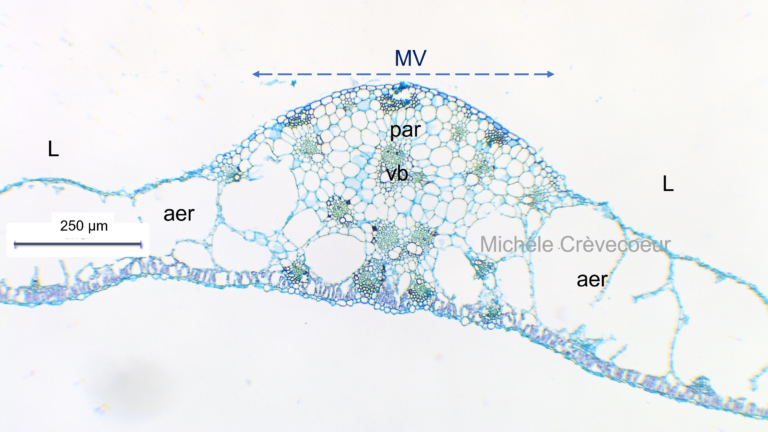Cross section in a leaf of Xanthosoma sagittifolium
Xanthosoma sagittifolium is an herbaceous, perennial plant in Araceae family. It is native from North of South America and is commonly called tannia. The leaves are arrow – shaped with long petioles and waxy margins. They can be up to 1 m long. The plant grows better in tropical humid areas and is found in swamps and along stream banks.
The cross sections below have been made in leaves specimens collected in the Geneva Botanical garden and immediately immersed in the FFA fixative to be embedded in paraffin.
The first microphotographe illustrates part of a section with the main vein (MV) and with portions of lamina (L) on both sides. The parenchyma (par) in the main vein consists of polygonal cells without intercellular spaces. At the level of the lamina there is aerenchyma (aer) that consists of row of small cells around large lacunae. This is related to the wet environment in which this plant preferentially grows. vb: vascular bundle.

Below high magnification view of the section at the main vein level. Epidermis of both faces are monolayers of cells with a thin cuticle. In the vascular bundle in the blue oval form xylem and phloem are superposed. Par: parenchyma; la: lacuna
